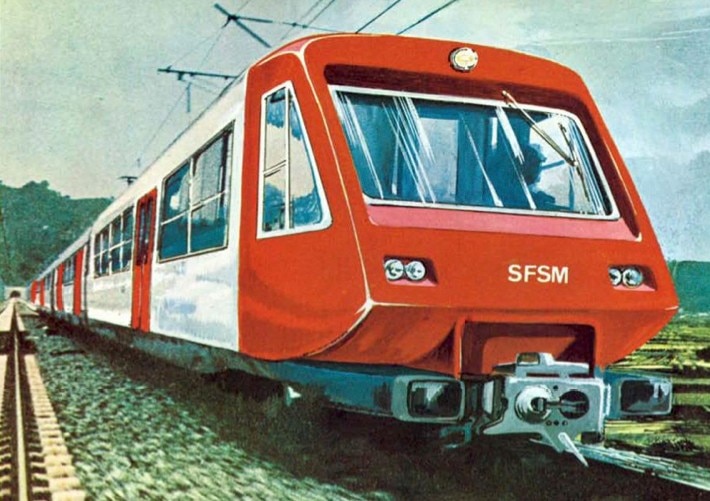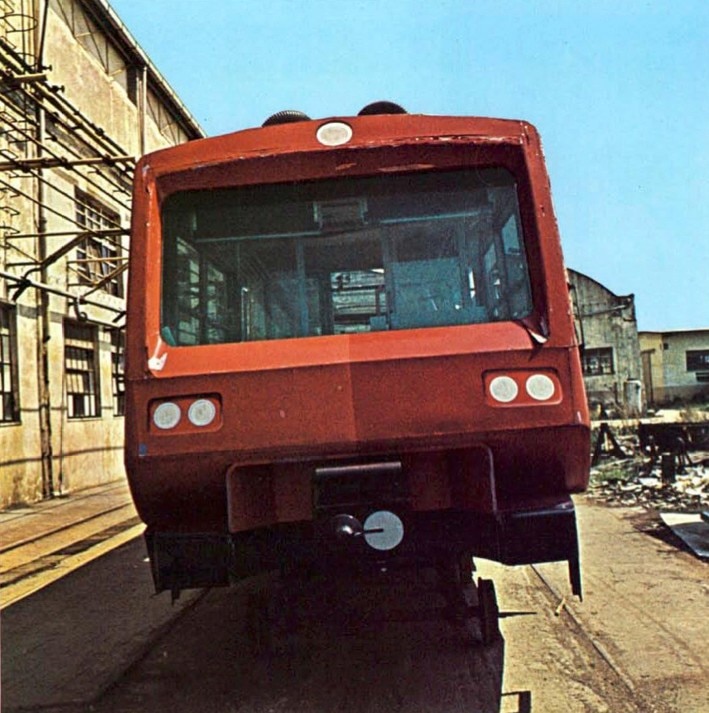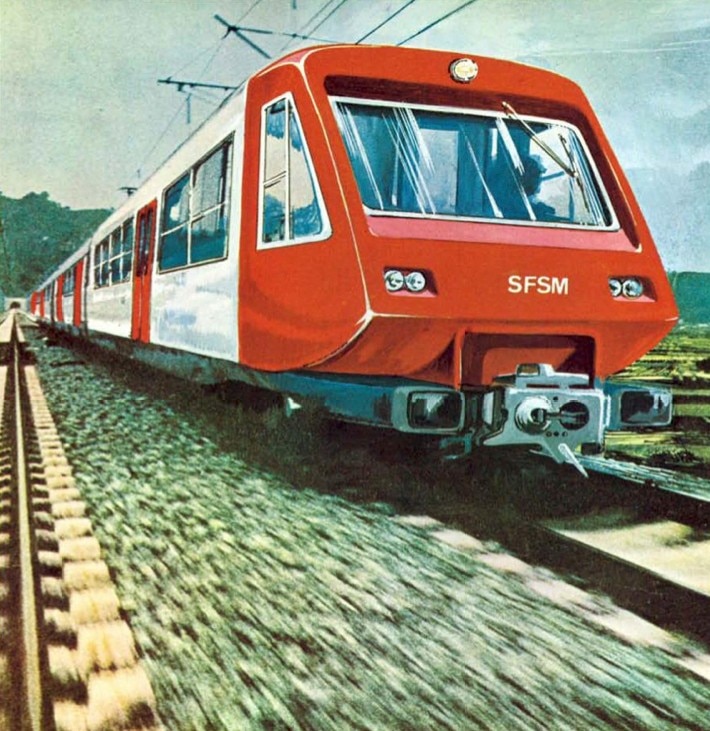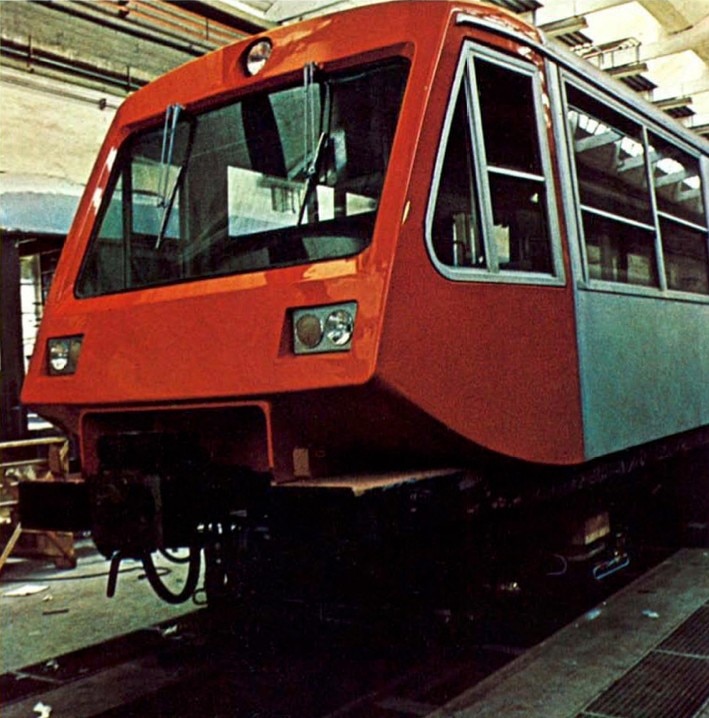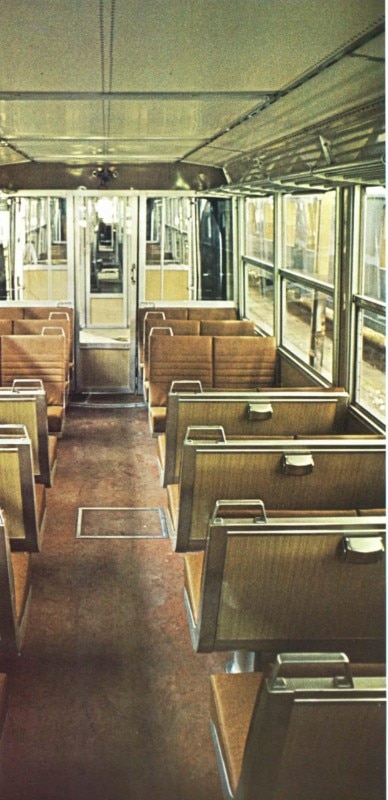To reach the Amalfi Coast and the archaeological areas of Pompeii and Herculaneum, the tourists visiting Naples are advised to go to the Garibaldi station, then downstairs (under the high-speed trains platform) and take the Circumvesuviana, the regional network of lines that connect the entire coast, from Naples Nolana to Sorrento. When it’s summer, the station gets crowded with people and the ticket offices are full of endless queues of foreigners waiting to see the seaside and locals fleeing from the heat of the city centre. On the platform, lots of people mumble, chit chat and complain, and you might have to wait many minutes before the train shows up. But then, finally, you hear the train coming. When you spot it, you and all the other passengers feel a certain relief. The train’s head is flaming red. Today, this colour does not amaze us anymore, yet at the time it represented a great revolution in train design.
The main features of the electro-train are ease of entry and exit for passengers and maximum train width
This electric train, which is still operating but has a renewed interior, is a little masterpiece designed in 1971 by the Superstudio group in collaboration with Ferroviaria Breda Pistoiesi, and the project was presented on Domus 555 on February 1976, when the director was still Gio Ponti.
“The standard electric train consists of three car-articulated units on two trailer bogies placed at the extremities, and two motor bogies in correspondence with the intermediate couplers. The train motors are entirely suspended under the units. It is possible to couple up to three basic electric trains, so as to form a 120-meter-long convoy, which is the maximum length allowed by the station platforms. The main features of the electro-train are ease of entry and exit for passengers (there are 4 double sliding doors on each side) and maximum train width of 2.70 m instead of the usual 2.35 m. The articulated solution and the special coupling between the passenger cars allow a full width passage between one car and another, increasing the space available for passengers): reduced weight and higher speed when cornering. The locomotive frames are made of semi-oxidized steel. The imperial and the sides of the train are lined with Peraluman 25 and lightweight sheet metals. The passenger cars at the extremities are made with a single bloc of synthetic resin, and the exterior door shutters are made of resin as well. A plastic monobloc floor is attached to the chassis of each wagon. Each unit is equipped with a heating and ventilation system. Inside, there’s a two-seater sofa with a light anodized body and polyurethane foam padding. The partition walls and interior coverings are in plastic laminate; the floor is in linoleum.” [1]
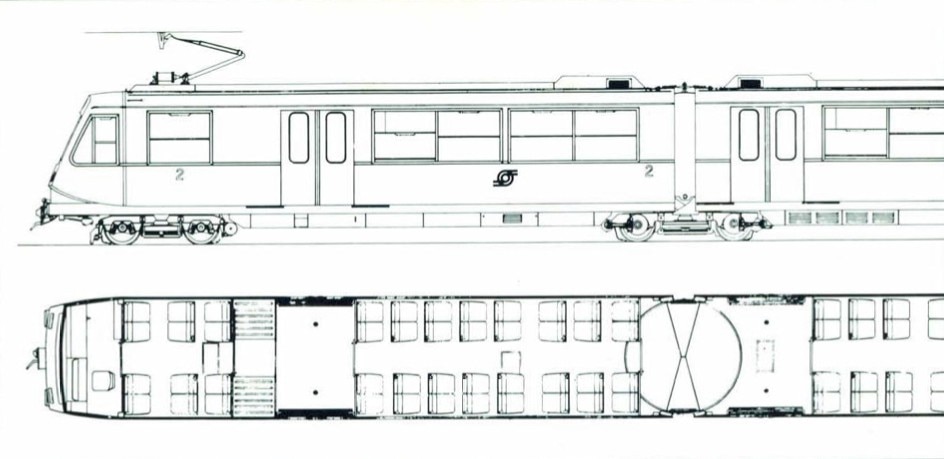
Behind Superstudio’s signature lies the genius of Roberto Magris: he was the group’s industrial designer [2] and the “big brother”, as Adolfo Natalini describes him, “more mature in strength and experience but younger in availability and enthusiasm” [3]. Magris was one of the first to employ fiberglass in the head part of a train, as if it was the keel of a boat, “an absolute novelty for the time, which was later adopted by all designers of vehicles for metropolitan traffic", says the architect Lorenzo Netti, who was a collaborator of Superstudio from 1978 to 1983 and professor of Industrial Design at the Politecnico di Bari. At the time, Magris was passionate about manufacturing technologies in the context of the shipbuilding industry, also thanks to his contacts with Studio M in Florence, a top-level model-making studio founded in 1968 that produced architecture models, boat models and moulds for the industrial production of many Italian companies. The design of that electric train was innovative, especially because of the color choice, which recalls Ferrari red and is in strong contrast with the pale colors of all the railway projects of that time - utilitarian design projects with little aesthetic value as it is typical of the military tradition.
During the years he spent designing his electric train, Magris filed several industrial patents and registered many models, created new prototypes and customized many Alfa Romeo cars exported to the USA. For the Circumvesuviana, he created a real engineering product, which Giovanni Klaus Koenig, a theorist of public transport systems design, defined as the most innovative product of the time. Adolfo Natalini recalled these very words in 2006, in the intense commemorative article that the architect wrote after the death of his friend and collaborator [4]. Magri was an extraordinary designer, but he had started off as an accountant. “His artist’s soul turned him into a designer, a graphic designer, an interior decorator”, always enthusiastic, “open to every adventure and full of talent”. With his “sporty physique, (he had been an excellent rugby player, editor’s note), short neck and broad smile,” Magri still represents to this day the engineering soul of Superstudio.
- [1]:
- Superstudio, Treno per la Circumvesuviana, in Domus, n. 555, febbraio 1976, pp. 34-37
- [2]:
- In the lithography published by Plura Edizioni of Un viaggio nelle regioni della ragione and in the illustrated postcard, Adolfo Natalini and Cristiano Toraldo di Francia sign as architects, while Roberto Magris signs as industrial designer, cf. Superstudio, Un viaggio nelle regioni della ragione, Plura Edizioni, Milan, 1971.
- [3]:
- A. Natalini, Addio a Magris anima generosa di Superstudio, 6 March 2003, www.repubblica.it
- [4]:
- Cfr. A. Natalini, Addio a Magris anima generosa di Superstudio, 6 March 2003, www.repubblica.it


